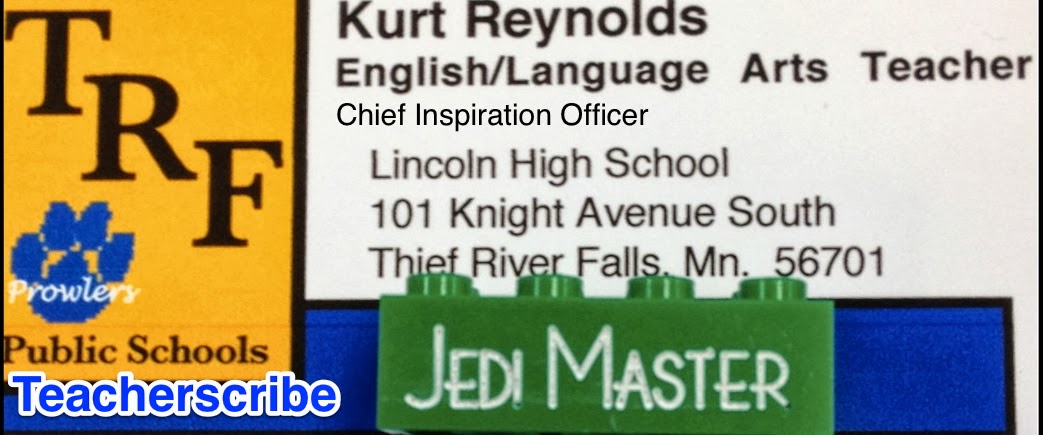Teacherscribe’s Teaching Tip #62
Embrace the digital landscape that is school today. Our roles have changed. I don’t see us ever going back either.
I think the role of teacher will change from being a ‘sage on the stage’ to a ‘guide on the side’ where we try to use project based learning to engage students and inspire them to put their native talents to work as they follow a process of inquiry to discover meaning rather than having us deliver it to them. I once read that the role of a great teacher is not to cover material for their students, but a great teacher allows their students to uncover the material on their own. I think that is as true for the digital generation as it ever has been.
I think the three key aspects of the new mindset teachers must adapt are: teachers must move off the stage. No longer can we talk at students.
First, we must engage them with Velcro learning that involves students being more actively engaged in their own learning.
Second, we must let students access information natively. Students today have so much power at their firngertips with their technology. I think it’s my job as a 21st century teacher to make them away of all the leverage they have. For example, if a student dislikes their school lunch, they have so much power to enact change. When I was a student in the last ‘80’s and early ‘90’s, I would have just been out of luck. What could I have done? I could have presented my complaint to the principal or written a letter to the paper. But the odds of me enacting significant change were zilch. Today, though, because of the amazing digital tools every student has, they can easily do what Seth Godin encourages them to do “make a ruckus.” Students today could easily document their issues with the school food via images, interviews, and polls using their smartphones and Twitter. They could get legitimate feedback from their peers via Instagram, Facebook, and Twitter. They could start an email campaign by emailing every member of the school board from the students’ various emails (our students each have at least three). So imagine if 25 motivated students were to each send every school board member 4 emails detailing their issues, questions, and suggestions regarding the school food. They would surely get the attention of the school board. Then students could document it all on a blog to show the community. Talk about making a ruckus! Here is an actual example of something very similar to that that occurred a few years ago.
The third key aspect in changing mindsets is teachers must let students collaborate. No longer will students – due to the flatworld in which they will both live and work – work in isolation. So why should we continue to teach them in isolation (as in students seated at single desks in rows listening to teachers recite supposedly important information that they then memorize and regurgitate on an isolated test). By allowing students to work collaboratively, teachers will be making their leaning Velcro and meeting the most important aspects of the Learning Cone (where students could work in groups to collaborate and then teach what they have learned to others) and of Project Based Learning.


No comments:
Post a Comment